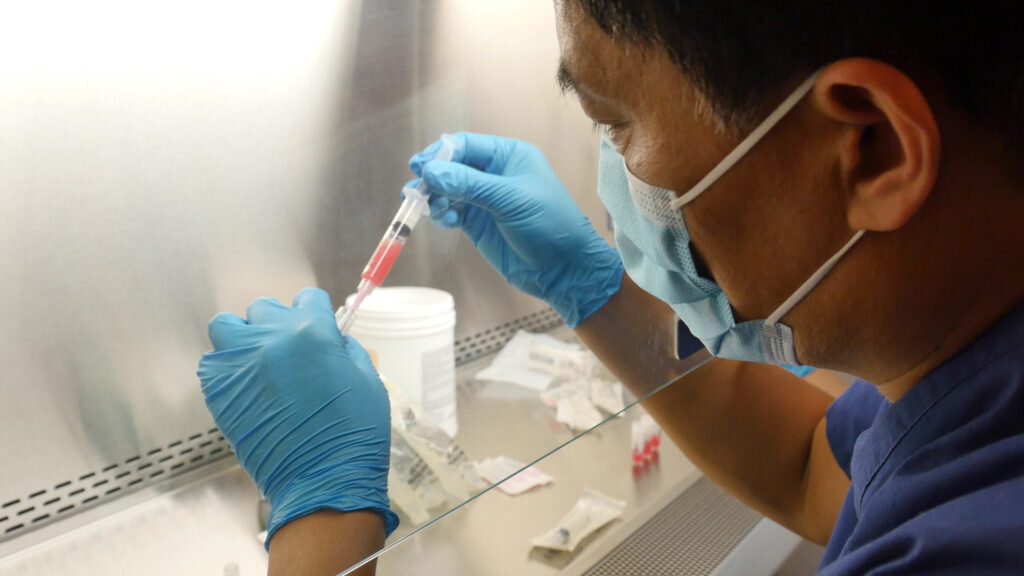New Drug Could Improve Effectiveness of Stem Cell Therapy
/By Pat Anson, PNN Editor
Scientists have developed an experimental drug that can lure stem cells to damaged tissues and help them heal -- a discovery being touted as a major advancement in the field of regenerative medicine.
The findings, recently published in the Proceedings of the National Academy of Sciences (PNAS), could improve the effectiveness of stem cell therapy in treating spinal cord injuries, stroke, amyotrophic lateral sclerosis (ALS), Parkinson’s disease and other neurodegenerative disorders. It could also expand the use of stem cells to treat conditions such as heart disease and arthritis.
“The ability to instruct a stem cell where to go in the body or to a particular region of a given organ is the Holy Grail for regenerative medicine,” said lead author Evan Snyder, MD, director of the Center for Stem Cells & Regenerative Medicine at Sanford Burnham Prebys Medical Discovery Institute in La Jolla, CA. “Now, for the first time ever, we can direct a stem cell to a desired location and focus its therapeutic impact.”
Over a decade ago, Snyder and his colleagues discovered that stem cells are drawn to inflammation -- a biological “fire alarm” that signals tissue damage has occurred. However, using inflammation as a therapeutic lure for stem cells wasn’t advisable because they could further inflame diseased or damaged organs, joints and other tissue.
To get around that problem, scientists modified CXCL12 -- an inflammatory molecule that Snyder’s team discovered could guide stem cells to sites in need of repair— to create a drug called SDV1a. The new drug works by enhancing stem cell binding, while minimizing inflammatory signals.
“Since inflammation can be dangerous, we modified CXCL12 by stripping away the risky bit and maximizing the good bit,” Snyder explained. “Now we have a drug that draws stem cells to a region of pathology, but without creating or worsening unwanted inflammation.”
To demonstrate its effectiveness, Snyder’s team injected SDV1a and human neural stem cells into the brains of mice with a neurodegenerative disease called Sandhoff disease. The experiment showed that the drug helped stem cells migrate and perform healing functions, which included extending lifespan, delaying symptom onset, and preserving motor function for much longer than mice that didn’t receive the drug. Importantly, the stem cells also did not worsen the inflammation.
Researchers are now testing SDV1a’s ability to improve stem cell therapy in a mouse model of ALS, also known as Lou Gehrig’s disease, which is caused by a progressive loss of motor neurons in the brain. Previous studies conducted by Snyder’s team found that broadening the spread of neural stem cells helps more motor neurons survive — so they are hopeful that SDV1a will improve the effectiveness of neuroprotective stem cells and help slow the onset and progression of ALS.
“We are optimistic that this drug’s mechanism of action may potentially benefit a variety of neurodegenerative disorders, as well as non-neurological conditions such as heart disease, arthritis and even brain cancer,” says Snyder. “Interestingly, because CXCL12 and its receptor are implicated in the cytokine storm that characterizes severe COVID-19, some of our insights into how to selectively inhibit inflammation without suppressing other normal processes may be useful in that arena as well.”
Snyder’s research is supported by the National Institutes of Health, U.S. Department of Defense, National Tay-Sachs & Allied Disease Foundation, Children’s Neurobiological Solutions Foundation, and the California Institute for Regenerative Medicine (CIRM).
“Thanks to decades of investment in stem cell science, we are making tremendous progress in our understanding of how these cells work and how they can be harnessed to help reverse injury or disease,” says Maria Millan, MD, president and CEO of CIRM. “This drug could help speed the development of stem cell treatments for spinal cord injury, Alzheimer’s, heart disease and many other conditions for which no effective treatment exists.”

















